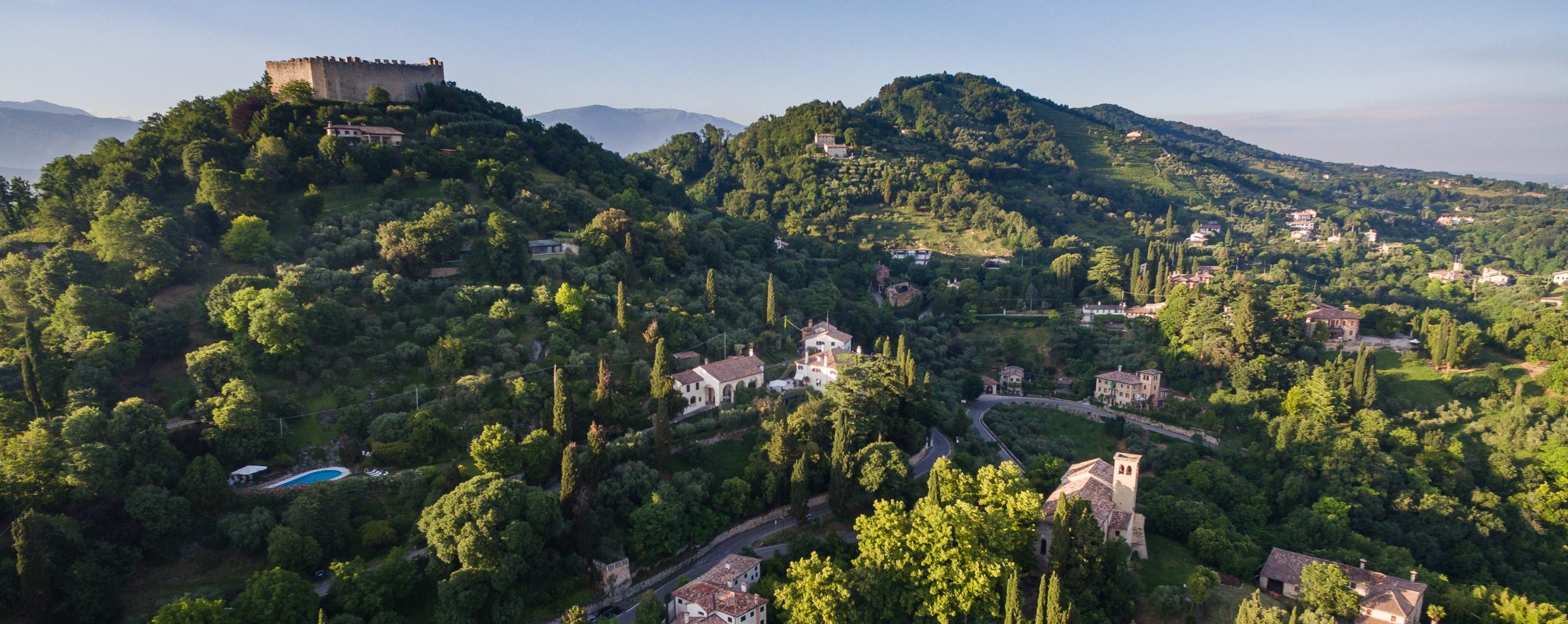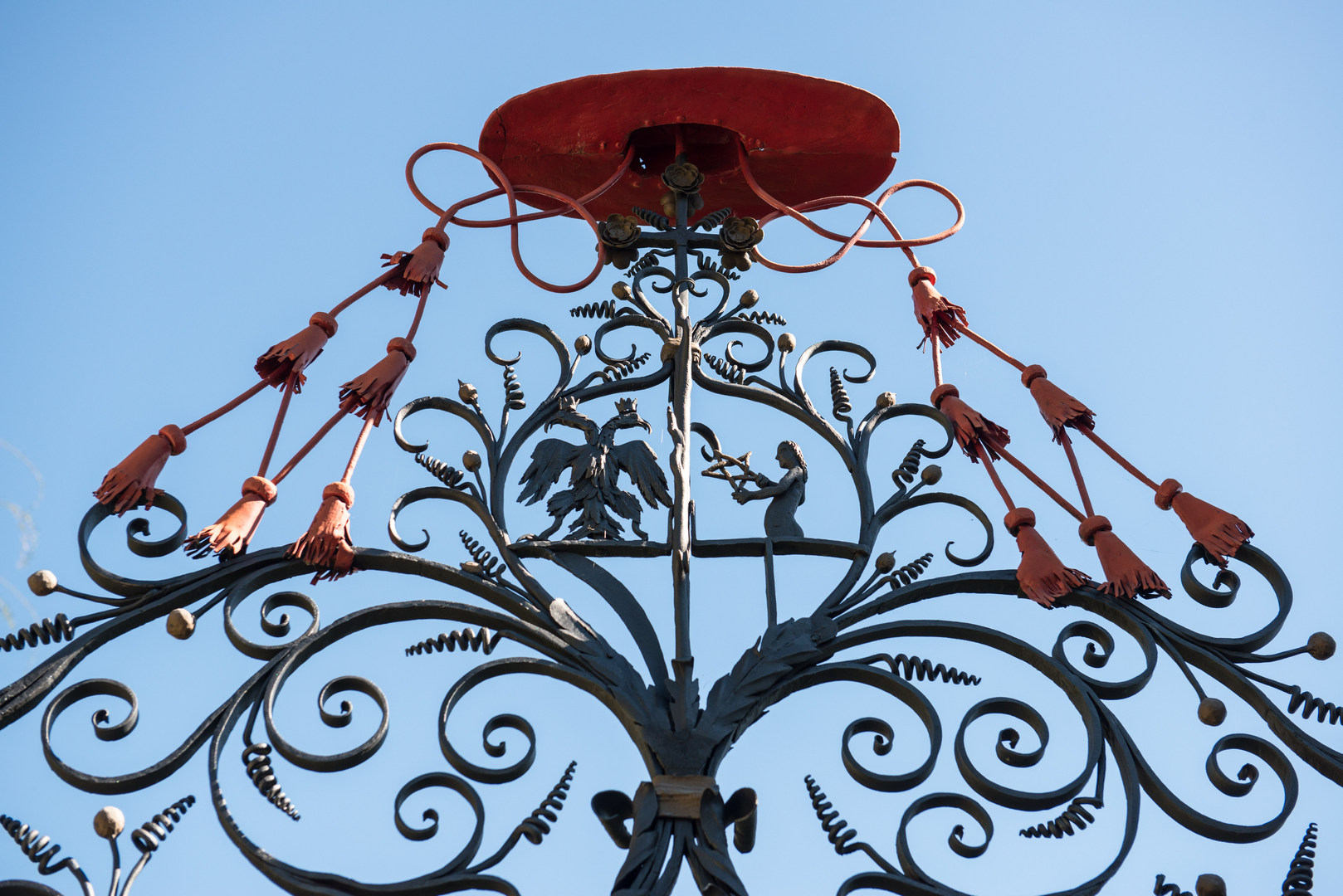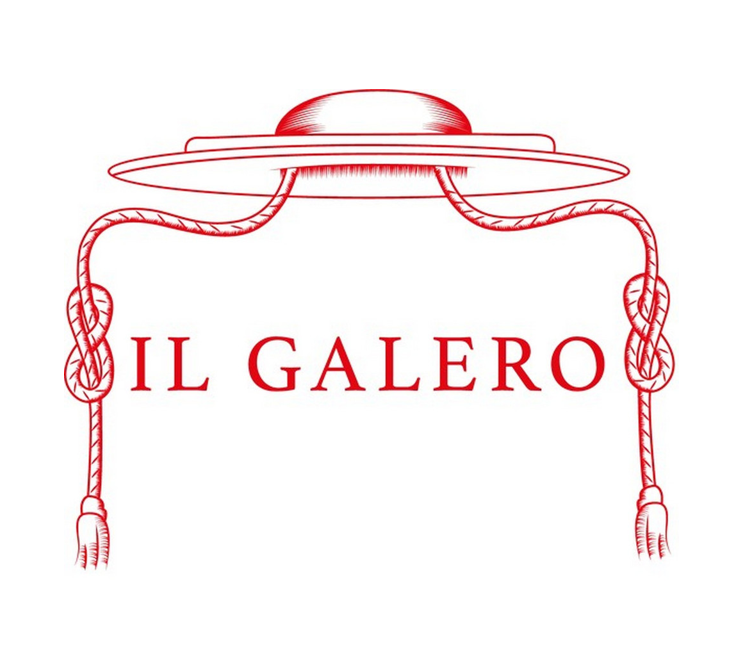
The property, which includes an extensive garden and park, is located on the eastern side of Asolo’s town centre in a historically important area, just below the Rocca or fortress.
The land was purchased in 1646 by the noble Venetian Rubini family and in 1691 the villa was erected by Cardinal Gian Battista Rubini, bishop of Vicenza and nephew of Pope Alexander VIII (known at the time as Pietro Ottoboni). The most illustrious figures of the time enjoyed hospitality at the villa. Thanks to the Cardinal, the villa became known as “Il Galero”, which is the name for the well-known headpiece that Cardinals wear consisting of a very stiff hat with a ribbed tassel, which has been reproduced in various decorative elements throughout the villa.
In 1700 the Rubini family left Asolo and the villa eventually passed on to the Braga, Bragadin and Moretti families. In 1870 the property was sold to Carlo Naya, who then sold it in the 20th century to the Fioccone family and lastly to the De Lord Rinaldi family, the current owners.

The villa is embellished with decorations adorning the walls, stuccoes and Venetian plaster in the late Baroque style, all of which are well preserved, giving the villa a refined and elegant look.
The family archive has unfortunately been lost and the name of the artist who crafted the decorations remains unknown. It is safe to say that the work was done by a Venetian master since the decorations have been rendered using a particular technique that allows for certain lines and embellishments consistent with the style at the time.
The fineness of craftsmanship is most evident in the drapery of the adornments and the embossed figures in bas-relief. As was already assumed in Renaissance times, two levels of interpretation of the decorations are possible; one being completely descriptive, the other more subtly symbolic. The birds that appear and disappear between cornices and pilasters – peacocks and owls, herons and sparrows, hawks and ibis – seem to fly in an obscure mystery, rather than in the festive elegance of the decoration.

